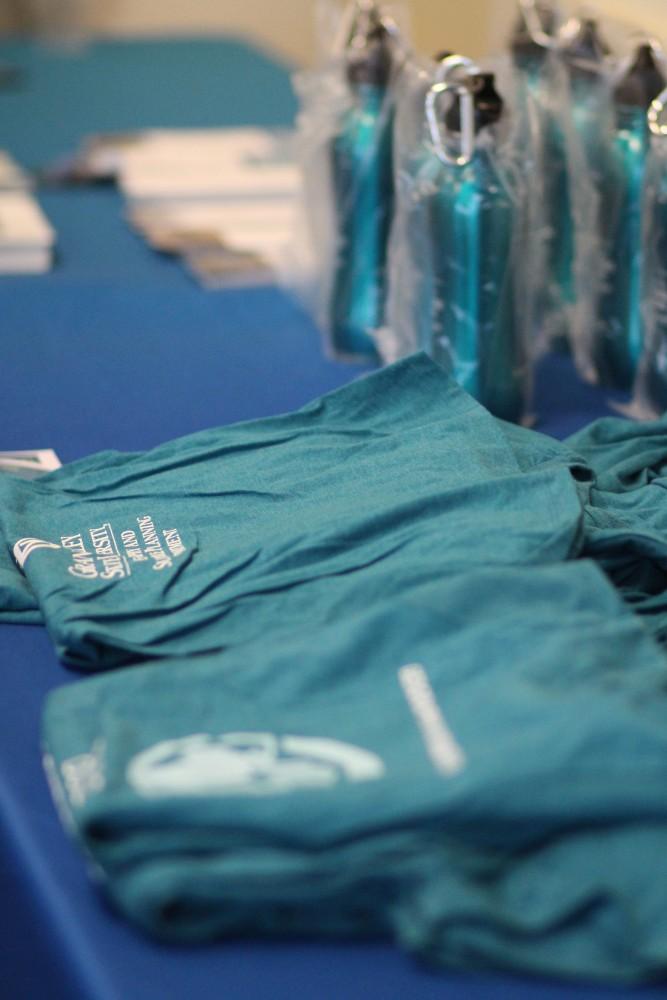Grand Rapids city designer speaks at GVSU

GVL / Sheila Babbitt GVSU’s Geography and Sustainable Planning Department provided T-shirts and water bottles at the Grand Rapids by Design event on March 27th, 2018.
Mar 29, 2018
The city of Grand Rapids can expect major changes in the next few years. To talk about the city’s master plan, Suzanne Schulz, managing director of design and development for Grand Rapids for 13 years, gave a presentation at Grand Valley State University. The event, “Grand Rapids by Design,” took place Tuesday, March 27, from 4 p.m. to 5 p.m. in the Kirkhof Center.
“Our work is to explain what the vision of the future is and think it through with dialogue with the community,” Schulz said. “We try to make new ideas tangible to the public.”
Schulz said the current master plan was created in 2002. The central focus is on engagement with the community of Grand Rapids. The plan has five parts: community values; vision; grey, green and blue infrastructure (GGBI); context and investment; and housing and equity.
First, GGBI is a process set in motion to increase tree canopies covering the city of Grand Rapids by 40 percent, utilize the Grand River better and redesign streets. Schulz spoke of how trees currently cover most of the city. She said that in the future the Grand River could also be changed to accommodate recreational activities such as kayaking and whitewater rafting. Twenty-two million dollars for 15 years is in the plans for bike paths, bus lanes and other safety features to be added to the streets.
Storm water runoff is also a large problem, Schulz said. To combat this, bio retention islands have been placed between roads to help catch a lot of water. Joe Taylor Park in Grand Rapids has also been designed to carry a 270,000-gallon infiltration station underneath the park to filter water before it goes into the Grand River, Schulz said.
As for investment, Schulz said $4 billion has been invested since 2000 in construction value. This amount of money from six anchor institutions has allowed the city of Grand Rapids to see tremendous growth and improvement.
Schulz said the difference with the future currently set for Grand Rapids is that the community members have gotten to contribute. Schulz’s team has created self-led initiative guides to help the community, too. These guides feature a board-game design. The games allow community members to select what they want changed in their communities and where. One example is in one neighborhood, tenants selected areas where they wanted to plant more trees and explained that they wanted a grocery store.
“The vision for the future is always asking about what you want your city to look like and be,” Schulz said.
Elena Lioubimtseva, professor and department chair of geography and sustainable planning at GVSU, is excited for the upcoming changes.
“Schulz is truly an inspiration for young planners graduating from our department,” Lioubimtseva said.
The event lasted for an hour and was followed by a Q&A segment. Posters detailing some of the new planning surrounded the room. Schulz concluded her discussion by saying she hopes to keep Grand Rapids home owners in their current positions and how her department is keeping equity in mind in its work.
“Grand Rapids is changing a lot,” Schulz said. “It’s a really dynamic city, and I’m honored to serve it.”






















